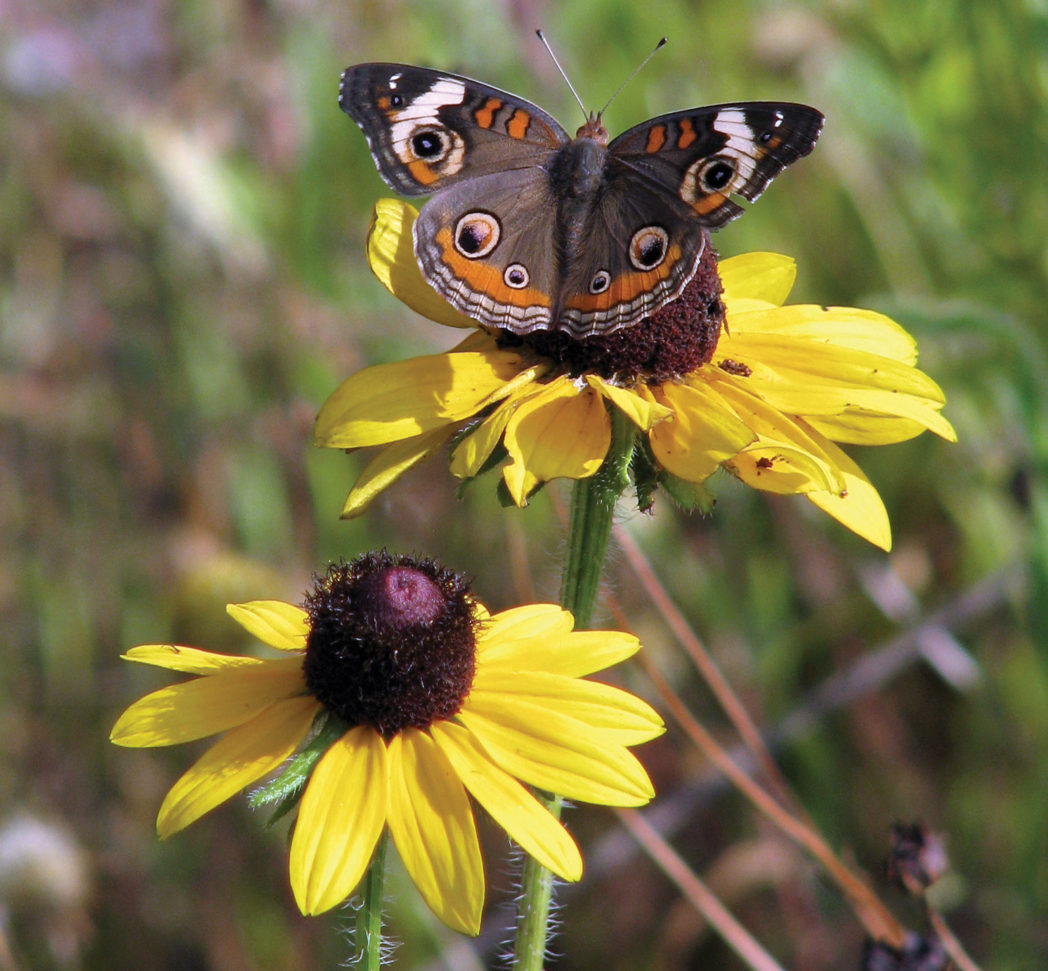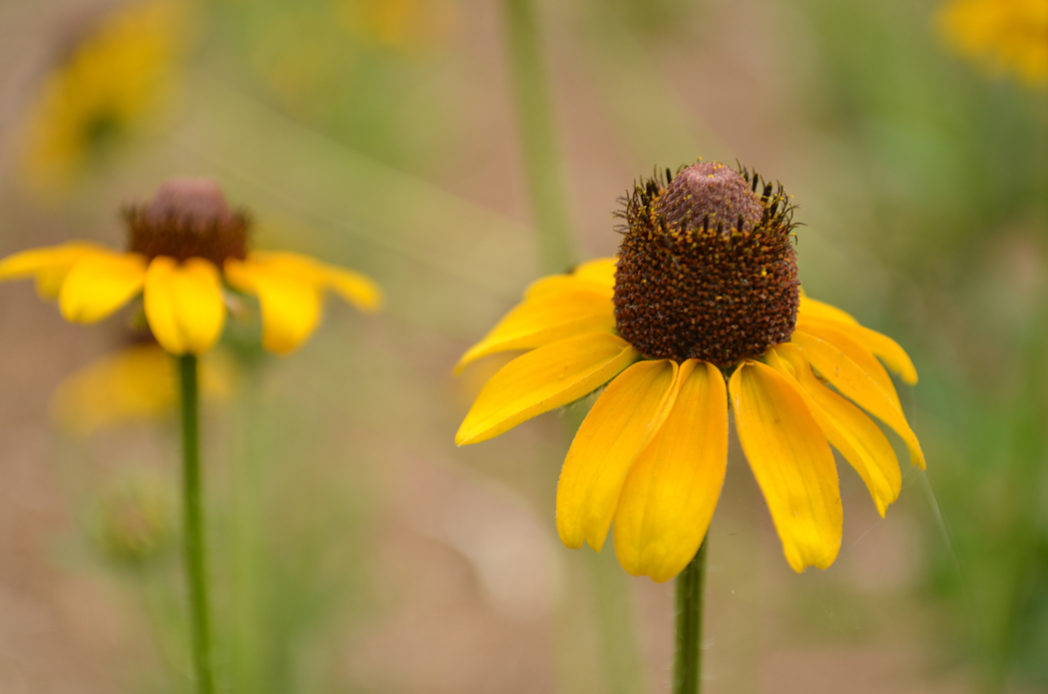Black-eyed Susan
Pictured above: Black-eyed Susan (Rudbeckia hirta) by Amanda Martin. Click on terms for botanical definitions. View post as a PDF.
Black-eyed Susan (Rudbeckia hirta) is a bright, cheerful wildflower found throughout Florida in sandhills, flatwoods and disturbed areas. It is an excellent nectar source for a variety of butterflies and bees and is also a larval host to some moths. The seeds are eaten by birds.
Black-eyed Susan’s compound flowerhead consists of many long yellow ray florets surrounding a central dome of dark purple to brown disk florets. Each solitary flowerhead is born on a rough, erect stem that emerges from a basal rosette of bristly leaves. Stem leaves are alternately arranged, with toothed margins and rough surfaces. Seeds are tiny black achenes.

Cut flowers can last up to 10 days in bouquets. Black-eyed Susan roots have also been used in various medicines.
Family: Asteraceae (Aster or Composite family)
Native range: Nearly throughout Florida
To see where natural populations of black-eyed Susan have been vouchered, visit www.florida.plantatlas.usf.edu.
Hardiness: 8A–11
Lifespan: Perennial, biennial or annual
Soil: Rich, well-drained soils
Exposure: Full sun to minimal shade
Growth habit: 1–3’ tall with 1–2’ spread
Propagation: Seeds
Garden tips: Black-eyed Susans are easy to grow and maintain. They spread by way of abundant self-sown seed. They are adaptable to both dry and moist sites, but flower best with regular moisture. Depending on the conditions, they can perform as a short-lived perennial, biennial or annual. Black-eyed Susan is excellent for mixed wildflower gardens, and disturbed areas such as roadsides and medians.
Note: There are two forms of Rudbeckia hirta found naturally in Florida — R. hirta var. angustifolia in the northern third of the state, and R. hirta var. floridana in the central and southern part of Florida. Both forms are typically available from native nurseries and they usually sell the form most common to their latitude; however, when purchasing R. hirta for your landscape, be sure to ask which variety is being sold. Non-native varieties are not recommended. (Source: Craig Huegel)
Black-eyed Susan seeds are available from the Florida Wildflower Cooperative. Plants are often available at nurseries that specialize in native plants. Visit PlantRealFlorida.org to find a native nursery in your area.
For more information on other Rudbeckia species, see these resources:

